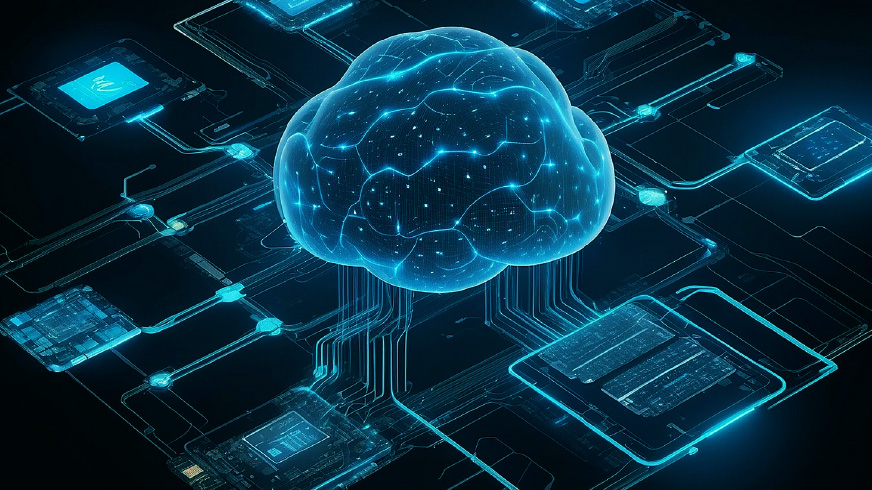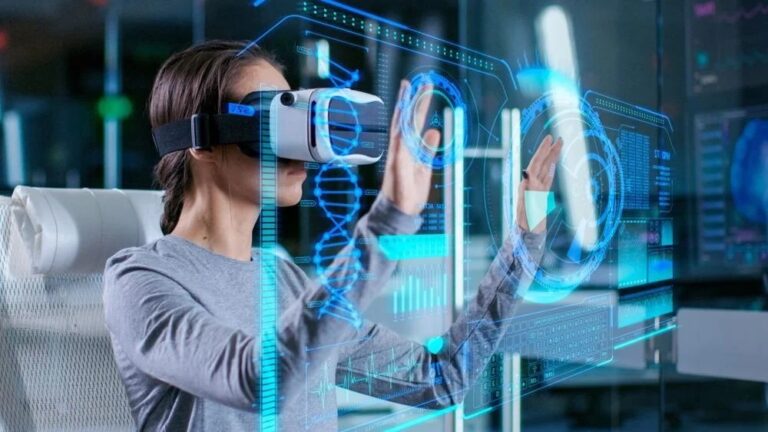The journey of deep learning continues to uncover new dimensions and applications. Here, we explore even more domains where deep learning is having a transformative impact.
Deep Learning in Real Estate
- Property Valuation:
- Market Analysis: Deep learning models analyze historical sales data, market trends, and economic indicators to provide accurate property valuations, assisting buyers, sellers, and investors.
- Predictive Pricing: AI predicts future property prices by analyzing factors such as neighborhood development, infrastructure projects, and demographic changes, helping stakeholders make informed decisions.
- Smart Buildings:
- Energy Management: Deep learning optimizes energy consumption in smart buildings by analyzing usage patterns, weather conditions, and occupancy levels, reducing costs and environmental impact.
- Security Systems: AI enhances security by analyzing video feeds and sensor data to detect unauthorized access, monitor building perimeters, and respond to potential threats.
Deep Learning in Manufacturing
- Quality Control:
- Defect Detection: Deep learning models analyze images and sensor data to detect defects in manufacturing processes, ensuring high product quality and reducing waste.
- Process Optimization: AI optimizes manufacturing processes by analyzing production data, identifying bottlenecks, and suggesting improvements, increasing efficiency and productivity.
- Predictive Maintenance:
- Equipment Monitoring: Deep learning models monitor equipment performance by analyzing sensor data, predicting maintenance needs, and preventing breakdowns, reducing downtime and maintenance costs.
- Lifecycle Management: AI assists in managing the lifecycle of manufacturing equipment by predicting wear and tear, optimizing replacement schedules, and extending equipment lifespan.
Deep Learning in Retail
- Customer Experience:
- Personalized Shopping: Deep learning models analyze customer behavior and preferences to provide personalized product recommendations, enhancing the shopping experience and increasing sales.
- Virtual Assistants: AI-powered virtual assistants assist customers by answering queries, suggesting products, and providing personalized shopping advice, improving customer satisfaction and engagement.
- Inventory Management:
- Demand Forecasting: Deep learning models predict product demand by analyzing historical sales data, market trends, and seasonal patterns, optimizing inventory levels and reducing stockouts.
- Supply Chain Optimization: AI enhances supply chain management by analyzing logistics data, predicting disruptions, and optimizing inventory distribution, ensuring timely product availability.
Deep Learning in Advertising and Marketing
- Targeted Advertising:
- Audience Segmentation: Deep learning models analyze customer data to segment audiences based on preferences, behaviors, and demographics, enabling more targeted and effective advertising campaigns.
- Ad Personalization: AI personalizes advertisements by analyzing individual user data, delivering relevant and engaging content that resonates with the target audience.
- Campaign Analytics:
- Performance Tracking: Deep learning models analyze campaign data to track performance metrics, identify trends, and measure ROI, helping marketers optimize their strategies and achieve better results.
- Sentiment Analysis: AI analyzes social media and customer feedback to gauge public sentiment towards campaigns, providing insights for improvement and crisis management.
Deep Learning in Automotive Industry
- Autonomous Vehicles:
- Self-Driving Technology: Deep learning models power autonomous vehicles by analyzing sensor data, mapping environments, and making real-time driving decisions, enhancing safety and efficiency.
- Driver Assistance Systems: AI enhances driver assistance systems by analyzing road conditions, detecting obstacles, and providing real-time alerts, improving driving safety and comfort.
- Vehicle Design and Manufacturing:
- Design Optimization: Deep learning models optimize vehicle design by analyzing aerodynamic performance, material properties, and manufacturing constraints, creating more efficient and innovative designs.
- Production Automation: AI automates manufacturing processes by analyzing production data, optimizing workflows, and reducing errors, increasing efficiency and product quality.
Deep Learning in Cybersecurity
- Threat Detection:
- Anomaly Detection: Deep learning models detect anomalies in network traffic, system logs, and user behaviors, identifying potential security threats and preventing cyber attacks.
- Malware Analysis: AI analyzes malware patterns and behaviors, detecting and mitigating threats in real-time, enhancing cybersecurity defenses and protecting sensitive data.
- Identity Verification:
- Biometric Authentication: Deep learning enhances biometric authentication systems by analyzing facial recognition, fingerprint, and voice data, providing secure and reliable identity verification.
- Fraud Prevention: AI detects fraudulent activities by analyzing transaction data, user behaviors, and network patterns, preventing identity theft and financial fraud.
Deep Learning in Journalism and Media
- Content Generation:
- Automated Reporting: Deep learning models generate news articles, summaries, and reports by analyzing data, events, and trends, providing timely and accurate information to readers.
- Video and Image Analysis: AI analyzes video and image data to identify key events, people, and objects, enhancing content creation and storytelling.
- Audience Engagement:
- Personalized News Feeds: Deep learning models personalize news feeds by analyzing user preferences, reading habits, and engagement metrics, delivering relevant and engaging content.
- Sentiment Analysis: AI analyzes reader feedback and social media interactions to gauge audience sentiment, helping media organizations tailor their content and improve engagement.
Deep Learning in Gaming
- Game Development:
- Procedural Content Generation: Deep learning models generate game content, such as levels, characters, and storylines, by analyzing player preferences and behaviors, creating diverse and immersive experiences.
- AI-Powered NPCs: AI enhances non-playable characters (NPCs) by analyzing player interactions and adapting behaviors, providing more realistic and engaging gameplay.
- Player Experience:
- Personalized Gaming: Deep learning models personalize gaming experiences by analyzing player data, preferences, and performance, offering tailored challenges and rewards.
- Cheat Detection: AI detects cheating behaviors by analyzing game data, player actions, and network patterns, maintaining fair play and enhancing game integrity.
Deep Learning in Social Media
- Content Moderation:
- Hate Speech Detection: Deep learning models detect and filter hate speech, abusive content, and misinformation by analyzing text, images, and videos, ensuring a safer online environment.
- Spam Filtering: AI identifies and filters spam content by analyzing user behaviors, message patterns, and network data, improving user experience and platform integrity.
- User Engagement:
- Content Recommendations: Deep learning models recommend personalized content to users by analyzing their interactions, preferences, and behaviors, increasing engagement and retention.
- Influencer Identification: AI identifies influential users and trends by analyzing social network data, helping brands and marketers target key influencers and optimize their strategies.
Conclusion
The exploration of deep learning reveals its boundless potential to revolutionize various industries and facets of life. As deep learning continues to evolve and mature, its applications will expand further, driving innovation and solving complex problems in unprecedented ways. Embracing the power of deep learning with a focus on ethical considerations and inclusivity will ensure that its benefits are realized broadly, creating a future where technology enhances human experiences and capabilities across all domains.





+ There are no comments
Add yours